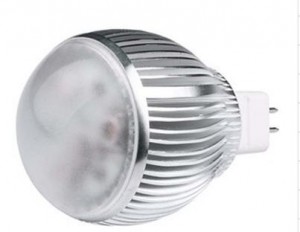LED lighting technique can be divided into three levels according to the power consumption: low power LED lamps (smaller than or equal to 20W); mid power LED lamps (20W – 50W); high power LED lamps (larger than 50W). In this article, we will discuss about low power LED lamps.

In 2010, the selling of global low power LED lamps was around 8.9 billion dollars. Experts estimated that from 2010 to 2015, the CAGR of low power LED lamps will be 39%. Low power LED lighting industry has a large potential.
MR11/16 lamps are low power lamps. Before the emergence of LED Lights, this area was dominated by halogens. A typical design is: 12DC / 24DC after transformers. The equivalent LED lighting technique still need transformers to convert AC to DC. Since they are more vulnerable to the variations of input voltage, transformers used on halogens are not competent. Currently the most commonly used transformer for MR16 LED lamps is high frequency electronic transformer. At present, the small LED market was mainly occupied by these two types of lamps. Both of them have advantages and disadvantages: LEDs have higher light efficiency while halogens are cheaper. 4W LED equivalent to 20W halogen.
The biggest challenge for LED MR11/16 lights is lacking of an identical standard, including cover, project, power factor and other electronic parameters. Different low power LED lighting manufacturers may probably have their own standards as a result of immature development. There will be no quick solution for this problem. Manufacturers should recognize the importance of a sustainable industrial development. And government also need to continuously issue support policies.
A new solution can embed transformers within LED drivers. As mentioned before, transformers for LED lighting products are much complex than halogens. Typically used solution is non-isolated PFC, which has been removed directly from transformers into drivers. Not only had the entire production process been improved (dramatically reduce cost), but also had the installation been simplified. The new non-isolated PFC drivers are more suitable for small sized PCB used in MR covers. PFC replaced all capacitors with transistors, saving a lot of space. It can meet the requirement of PF and THD only though certain outside components. They have a power factor as much as 80%.
